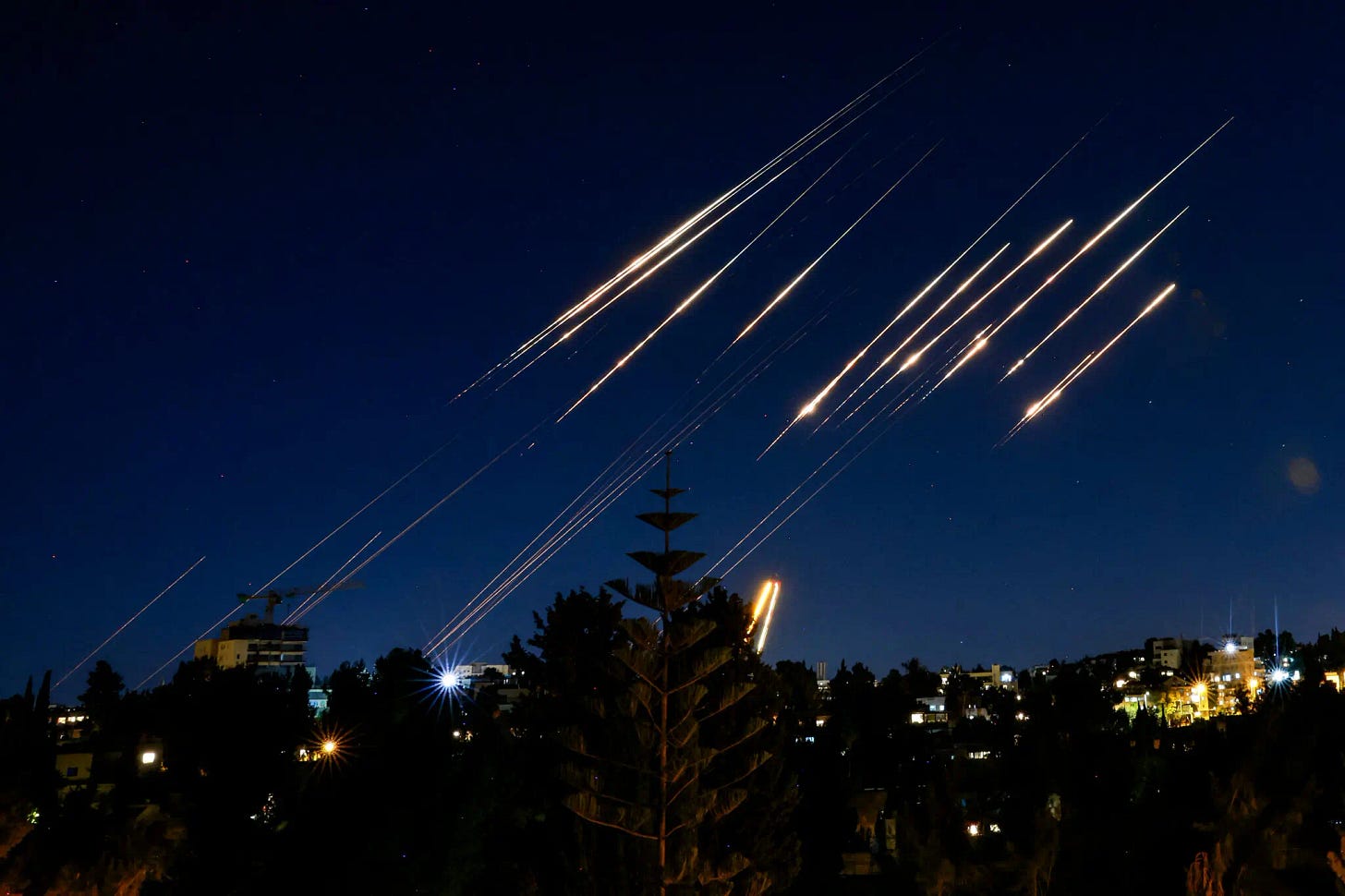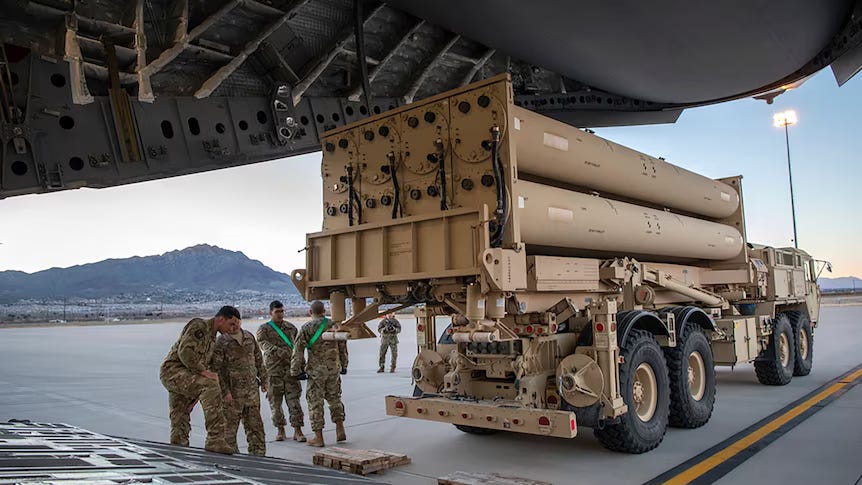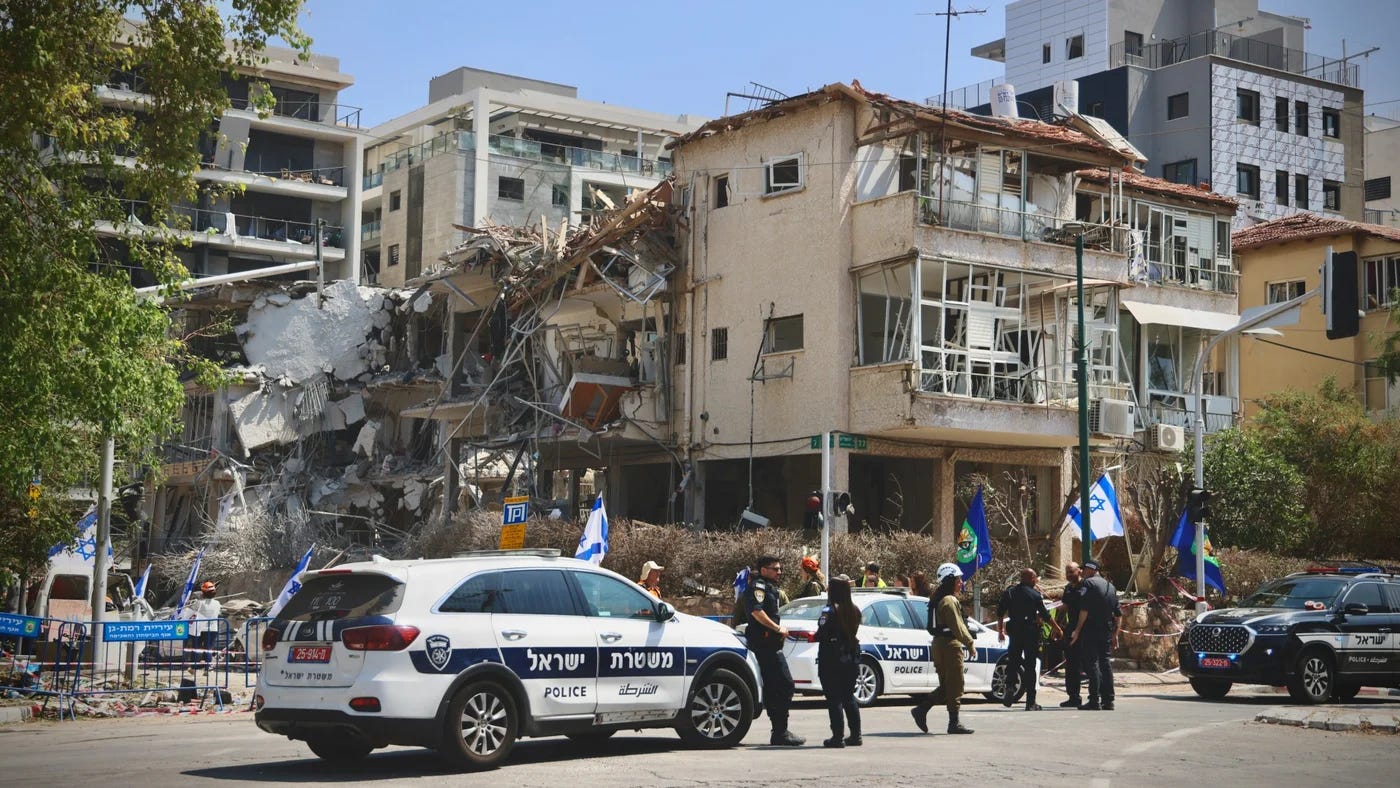The Israeli-Iranian confrontation is escalating daily, moving toward a level of unrestrained intensity. Contrary to recent indications suggesting the conflict was nearing its end, current developments reveal that we are still in its early stages. Any talk of a swift conclusion is premature.
On the morning of June 19, Iran launched between 20 and 30 missiles toward wide areas in Israel. According to Hebrew media, the attack injured 137 Israelis, and video footage showed significant destruction in Beersheba. This latest barrage, the fourteenth since the conflict began, is the largest and most impactful in the past 48 hours.
Iranian state media reported that the intended target was the Israeli army's intelligence and command headquarters, which houses thousands of soldiers, digital command systems, cyber warfare operations, and surveillance networks.
This escalation comes as former U.S. President Donald Trump adopts an increasingly hostile stance toward Iran, demanding its surrender as a condition for ending the war. He insists on the complete abandonment of Iran's nuclear program and submission to American terms at the negotiating table.
Supreme Leader Ali Khamenei rejected these demands outright, and Trump implied he could target Khamenei directly, though he postponed such action for the time being.
The recent strike revitalized Iran's military momentum after a relative lull, sending a clear message to both the U.S. and Israel that Tehran is committed to escalating until its goals are achieved. Meanwhile, Washington is still deliberating over whether to engage directly in the conflict, amid internal divisions. Israel, for its part, has intensified its threats of retaliation.
Channel 12 in Israel reported that since June 13, Iranian missiles have killed 24 people, injured 838, and displaced around 5,000 residents. The question now is whether this latest escalation will compel Trump to make a final decision.
Tehran: A Gradual Shift in Escalation Strategy
Since the beginning of its confrontation with Israel, Iran has adopted a fluctuating strategy that alternates between escalation and de-escalation. The first day saw an intense assault with more than 200 missiles and drones launched in waves overnight. This initial intensity was followed by reduced barrages—50, then 30, then 20 missiles over successive days—leading to the latest round involving about 30 missiles and the potential for more throughout the day.
This variation reflects Iran's evolving objectives. Initially, the aim was to create chaos and fear among Israelis, forcing them into shelters and prompting Israel to declare a state of emergency and exhaust its military resources. This was achieved through mass use of cruise and ballistic missiles and drones.
Once that goal was met, Iran shifted to a second phase: targeting strategic military, security, and logistical sites with high-precision, high-tech hypersonic missiles like Khoramshahr, Sejjil, Qassem, Emad, Fattah, and Zelzal. These missiles, which can reach speeds of Mach 11–16 and carry warheads over 1,000 kg, are capable of penetrating fortified defenses and causing significant damage to concrete-reinforced targets.

Through this strategy, Tehran seeks to undermine U.S. and Israeli assessments suggesting a decline in Iran's daily missile capability. Iran emphasizes that effectiveness—not sheer numbers—is what matters.
The Islamic Revolutionary Guard Corps (IRGC) warned that no place in Israel is safe and that Israeli air defense systems have become ineffective. It added that the Israeli economy cannot withstand the next phase of attacks.
Analysts suggest that Iran may be using new, unidentified missile technologies capable of blinding radar systems, noting that selected targets—such as a military hospital in Beersheba and the Israeli stock exchange—were deliberately chosen to demonstrate that strategic and economic sites are now within range.
Beyond immediate destruction, such strikes could destabilize Israeli society and increase pressure on Prime Minister Benjamin Netanyahu to justify his preparations for war with a powerful adversary like Iran. Iran now dominates Israel's airspace, forcing millions into shelters for days.
Toward U.S. Intervention?
Iran's latest strikes and the resulting Israeli losses may push Trump toward formally joining the war, potentially through joint operations with Israeli air forces targeting Iranian nuclear facilities. Several factors could influence this decision:
Israel's portrayal of itself as a victim has intensified, especially following the Soroka hospital strike. Media coverage of the damage has contrasted with previous Israeli censorship during the conflict, increasing pressure on pro-Israel lobbies in Washington.
The symbolic weight of Israel as a Western ally, and fears of its weakening defense capabilities amid soaring costs—estimated at $28 billion—are also driving concern.
Trump's fear of domestic backlash if Iran emerges emboldened, potentially affecting his support from the pro-Israel lobby and Republican party backers.
Constitutional checks: some lawmakers are working to limit Trump’s ability to declare war without Congressional approval, especially as Iran has not attacked U.S. assets directly.
Since the conflict began, Trump has faced competing pressures from within his own party: hardliners pushing for full-scale intervention, and pragmatists like Tucker Carlson and Steve Bannon arguing that this is not America’s war.

Meanwhile, regional powers are warning of dangerous consequences. Russia has warned that U.S. involvement would escalate tensions uncontrollably, while China has called for diplomatic solutions. Intelligence reports suggest that Iran has positioned its proxies in Iraq, Yemen, and Lebanon for retaliation if the U.S. joins the fight. The IRGC may also target U.S. bases and mine the Strait of Hormuz to trap American warships.
Reflecting Washington’s uncertainty, the U.S. military has redeployed aircraft and naval assets to safer locations. According to Reuters, American forces were moved from Bahrain and Qatar to mitigate potential Iranian strikes.
The U.S. has roughly 18 permanent military installations in the region, with an estimated 30,000 troops—possibly rising to 50,000 since the Red Sea crisis in October 2024.
Prospects for Negotiation
Despite signs pointing to a protracted conflict, some believe that this level of escalation may eventually push all sides—willingly or not—toward negotiations.
The New York Times cited a senior Iranian official suggesting that Tehran could accept Trump's offer for direct talks. Iranian Foreign Minister Abbas Araghchi is reportedly open to ceasefire discussions with Israel, though Supreme Leader Khamenei remains opposed.
Trump has claimed that Iran has expressed interest in talks, stating that “an agreement is still possible,” though he has not made a final decision on next steps.
For now, both sides continue trading blows and escalating tensions, as the U.S. navigates internal and international pressures. The conflict teeters between a potential diplomatic breakthrough and a wider regional war. Each strike raises the stakes in a game of brinkmanship, with the world watching who will blink first.



